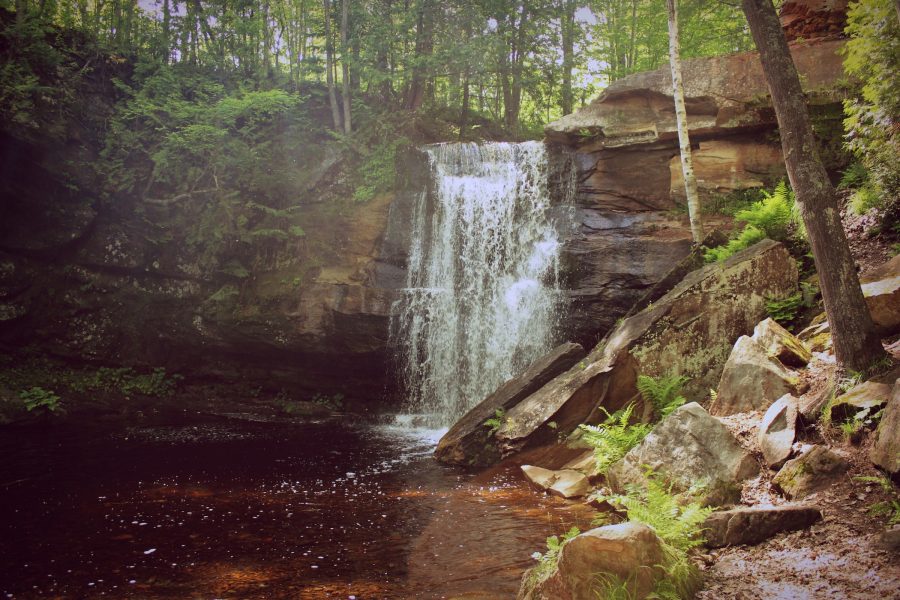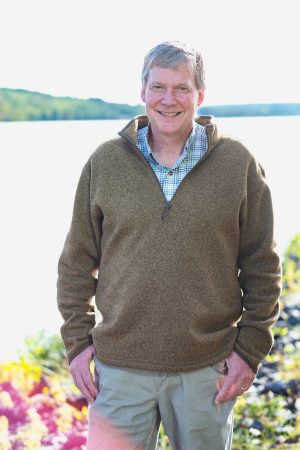
John Gierke shares his knowledge on Husky Bites, a free, interactive webinar this Monday, May 11 at 6 pm. Learn something new in just 20 minutes, with time after for Q&A! Get the full scoop and register at mtu.edu/huskybites.

A self-professed “Yooper graduate of the school of hard rocks,” John Gierke chairs the Department of Geological and Mining Engineering and Sciences (GMES) at Michigan Technological University. He’s also an alumnus, earning a BS and MS in Civil Engineering, and a PhD in Environmental Engineering, all at Michigan Tech.
Q: How do the rocks connect us?
A: The geology of the Keweenaw and Western Upper Peninsula is quite unique and different than the Eastern Upper Peninsula and Lower Peninsula. The geology of the Keweenaw is more exposed and accessible. The experience of spending time in the Copper Country is enhanced if you understand more about the forces of nature that formed this beautiful place. While geologists are knowledgeable in identifying rocks, their truest natures are also wrapped in a yearning to be outdoors, exceptional observation skills, and insatiable curiosity to understand Earth processes. The processes that led to the geological formations that lie beneath us–and shaped our landscapes–are what dictated many of the natural resources that are found where each of us live.
Q: When did you first get into engineering? What sparked your interest?
A: I began studying engineering at Lake Superior State College (then, now University) in the fall of 1980, in my hometown of Sault Ste. Marie. In those days their engineering program was called: General Engineering Transfer, which was structured well to transfer from the old “Soo Tech” to “Houghton Tech,” terms that some old timers still used back then, nostalgically. I transferred to Michigan Tech for the fall of 1982 to study civil engineering with an emphasis in environmental engineering, which was aligned with my love of water (having grown up on the St. Mary’s River).
Despite my love of lakes, streams, and rivers, my technical interests evolved into an understanding of how groundwater moves in geological formations. I used my environmental engineering background to develop treatment systems to clean up polluted soils and aquifers. That became my area of research for the graduate degrees that followed, and the basis for my faculty position and career at Michigan Tech, in the Department of Geological and Mining Engineering and Sciences (those sciences are Geology and Geophysics). My area of specialty now is Hydrogeology.
Q: Can you tell us more about your growing up? Any hobbies?
A: Growing up I fished weekly, sometimes daily, on the St. Mary’s River throughout the year. Sault Ste. Marie is bordered by the St. Mary’s River on the north and east. In the spring-summer-fall, I fished from shore or a canoe or small boat. In the winter, I speared fish from a shack just a few minutes from my home or traveled to fish through the ice in some of the bays. I was a fervent bird hunter (grouse and woodcock) in the lowlands of the EUP, waterfowl in the abundant wetlands, and bear and deer (unsuccessfully until later in life). I now live on a blueberry farm that is open to the public in August for U-Pick. I used my technical expertise to design, install, and operate a drip irrigation system that draws water from the underlying Jacobsville Sandstone aquifer.

Want to know more about Husky Bites? Read about it here.
